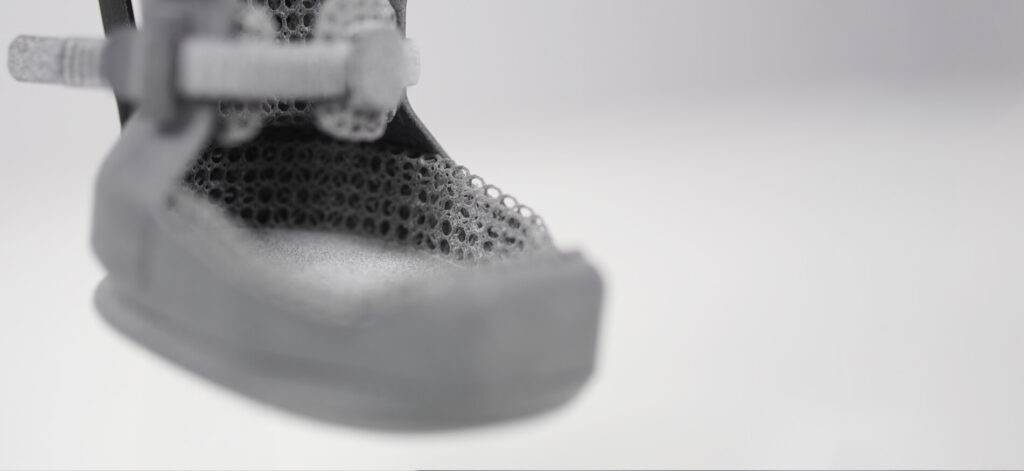Medial/Lateral Instability of the Right Carpus
WIMBA Carpus Orthosis Pro with Paw Support
Case Report – Sophia
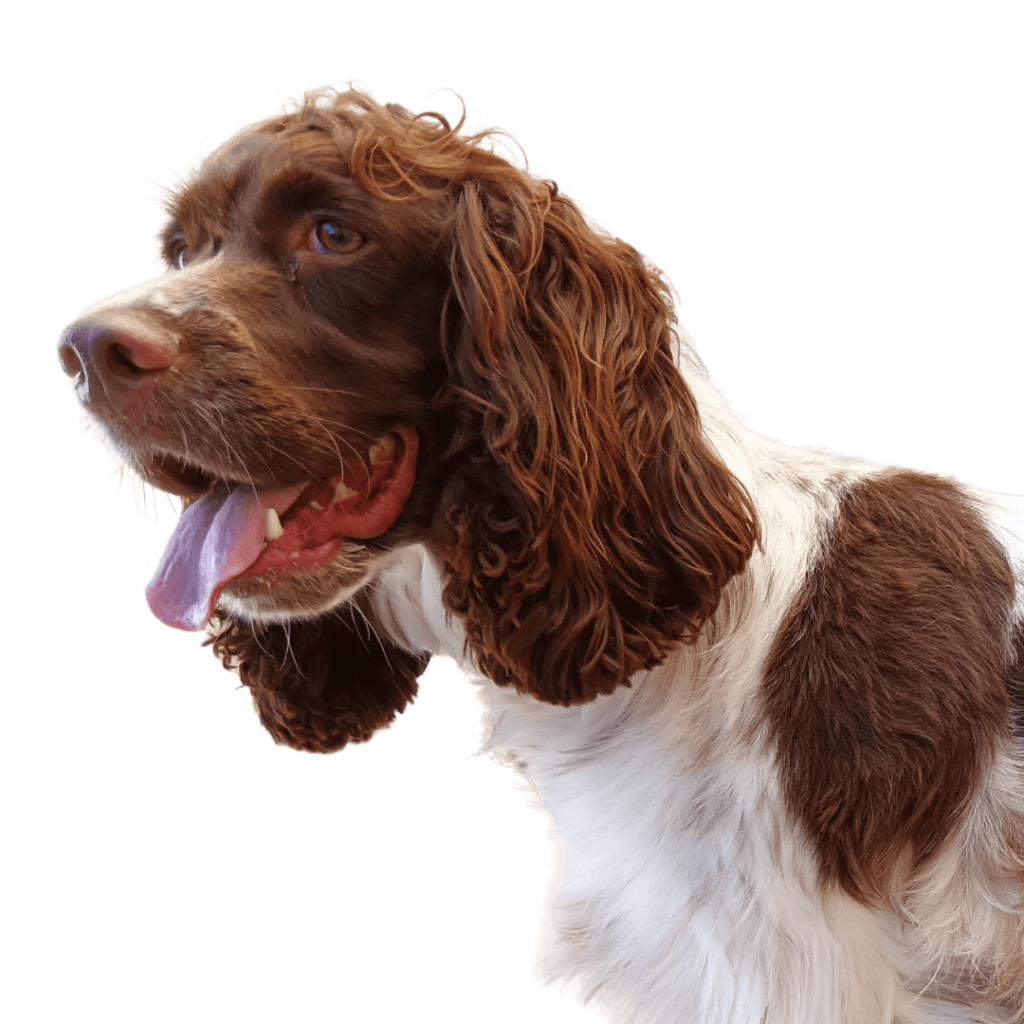
1. Abstract
A 14-month-old English Springer Spaniel, Sophia, with a suspected brachial plexus injury resulting in right forelimb weakness and carpal instability, was enrolled in a pilot orthosis program. A custom-made orthosis was designed and fabricated to provide support and improve function. Over several weeks, Sophia’s progress with the orthosis was monitored, including assessments of weight-bearing, gait, and owner feedback. This case study details the challenges and outcomes of this novel orthosis intervention, exploring the complexities of canine rehabilitation and orthosis tolerance.
2. Patient Data
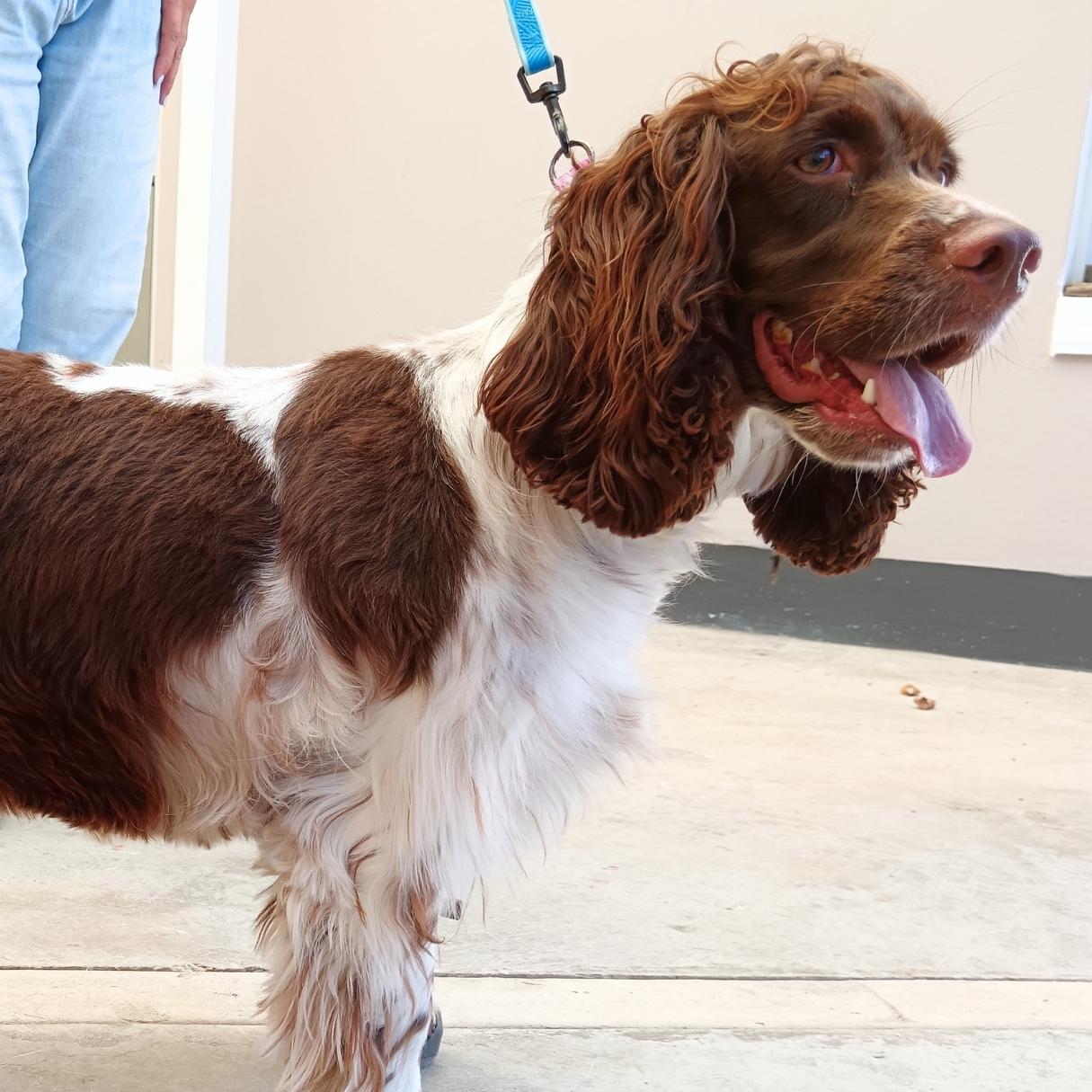
Name: Sophia
Breed: English springer spaniel
Date of birth: 14/08/2023
Weight: 18.85 kg
WIMBA Provider: Nadia Schrenk, NSVetPhys

3. Examination Findings
She is believed to have a form of traction injury to her brachial plexus that has affected the nerve supply to her right forelimb (RF).
The structures most affected are the carpal flexors and extensors leading to low muscle tone and atrophy, and her digits causing her to be flat footed. Her digits are extended, causing her to bear weight on the entire palmar aspect of her foot.
Summary: Medial/lateral instability of the right carpus.
4. Clinical Hypothesis
The goal of the orthosis is to provide medial/lateral stability of the right carpus and protect the underside of the paw. It also aims to maintain the current muscle mass of her right front leg (RF) and carpal range while minimizing pain on flexion.
5. Solution
WIMBA Carpus Orthosis Pro with paw support was selected for Sophia based on a 3D scan using WimbaSCAN.
WimbaSCAN for WIMBA Carpus Orthosis Pro with Paw Support
Fig. 1 3D Model of the Dog’s Limb Based on WimbaSCAN

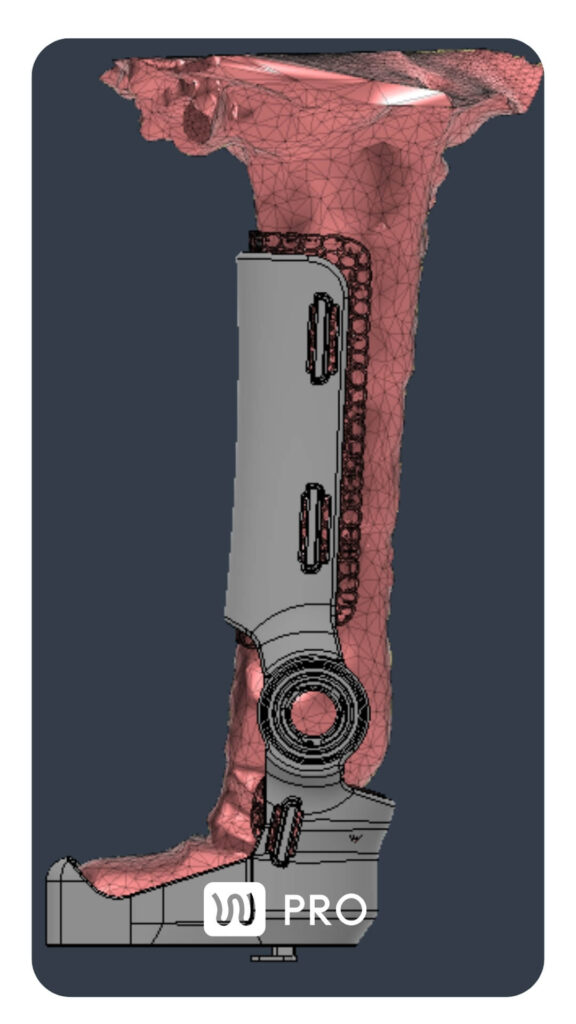
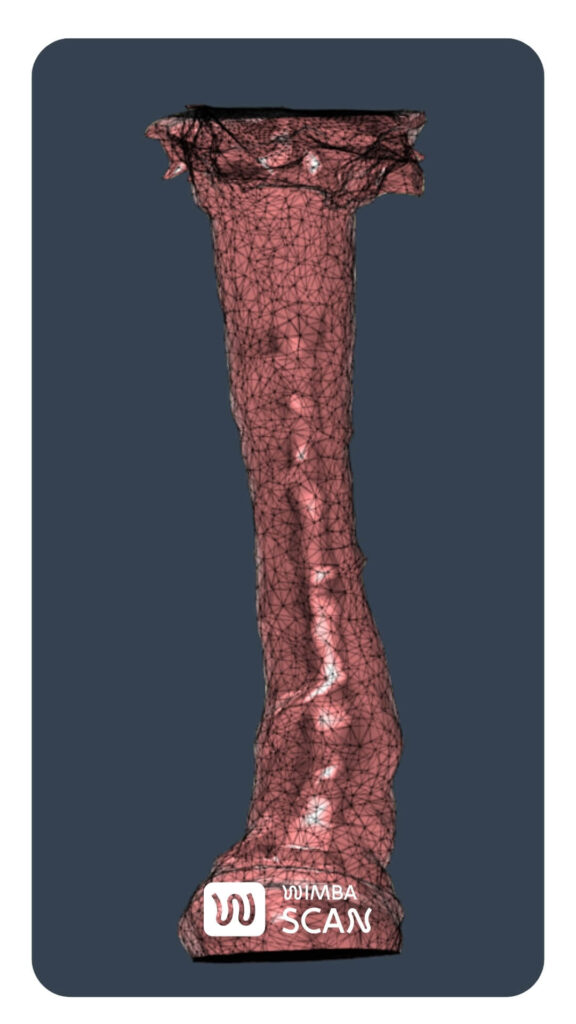
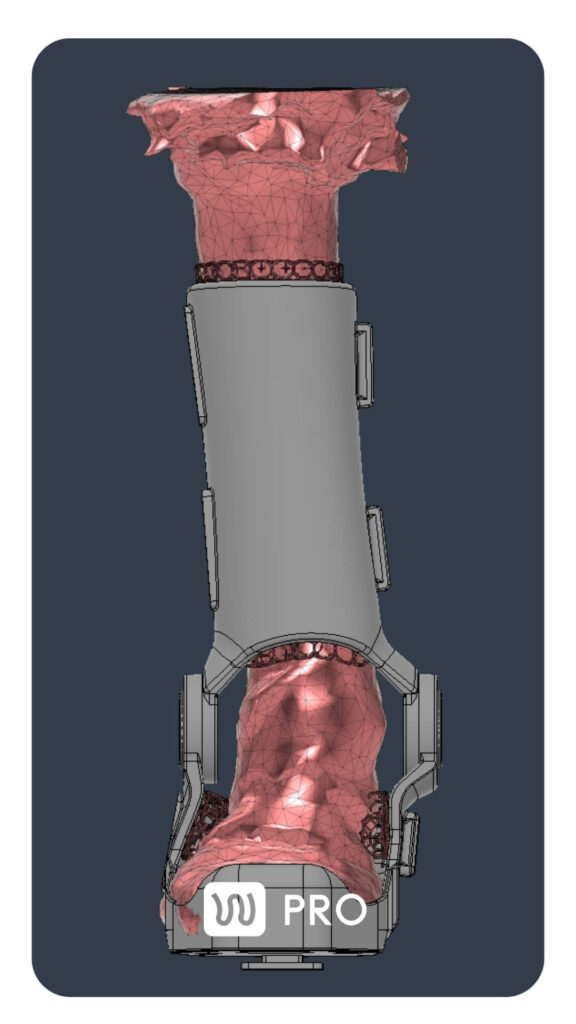
6. Rehabilitation Plan
7. Outcome
Sophie was scared and anxious during the initial fitting, attempting to avoid the orthosis. The owner was instructed to take the orthosis home to help Sophie get used to it.
The orthosis continued to provide medial/lateral stability of the right carpus. Sophie was intermittently non-weight bearing on her right front leg, exhibiting a high stepping gait when she did bear weight. Her rehabilitation progress was stable, focusing on maintenance and fitness with hydrotherapy and core exercises.
Sophie’s muscle mass and carpal range remained stable. She was more willing to be placed in the orthosis but still showed intermittent non-weight bearing. When walking, a slight forelimb lameness was observed, with a head-nod up during weight bearing and increased flexion in the shoulder but less flexion in the carpus. There was continued improvement in her carpal valgus. The owner reported struggling with Sophie’s adaptation to the Pro brace, using it in conjunction with her normal orthosis for high-activity periods.
No significant changes were noted in Sophie’s condition. The appointment focused on fitness and conditioning, including underwater treadmill exercises and core work. Sophie injured herself tripping in a hole, requiring laser and manual therapy. Although she is increasingly willing to bear weight with the orthosis, she remains reluctant to have it put on. The orthosis provides the intended medial/lateral support and reduces rotation through the limb when walking.
8. Before and After Using WIMBA

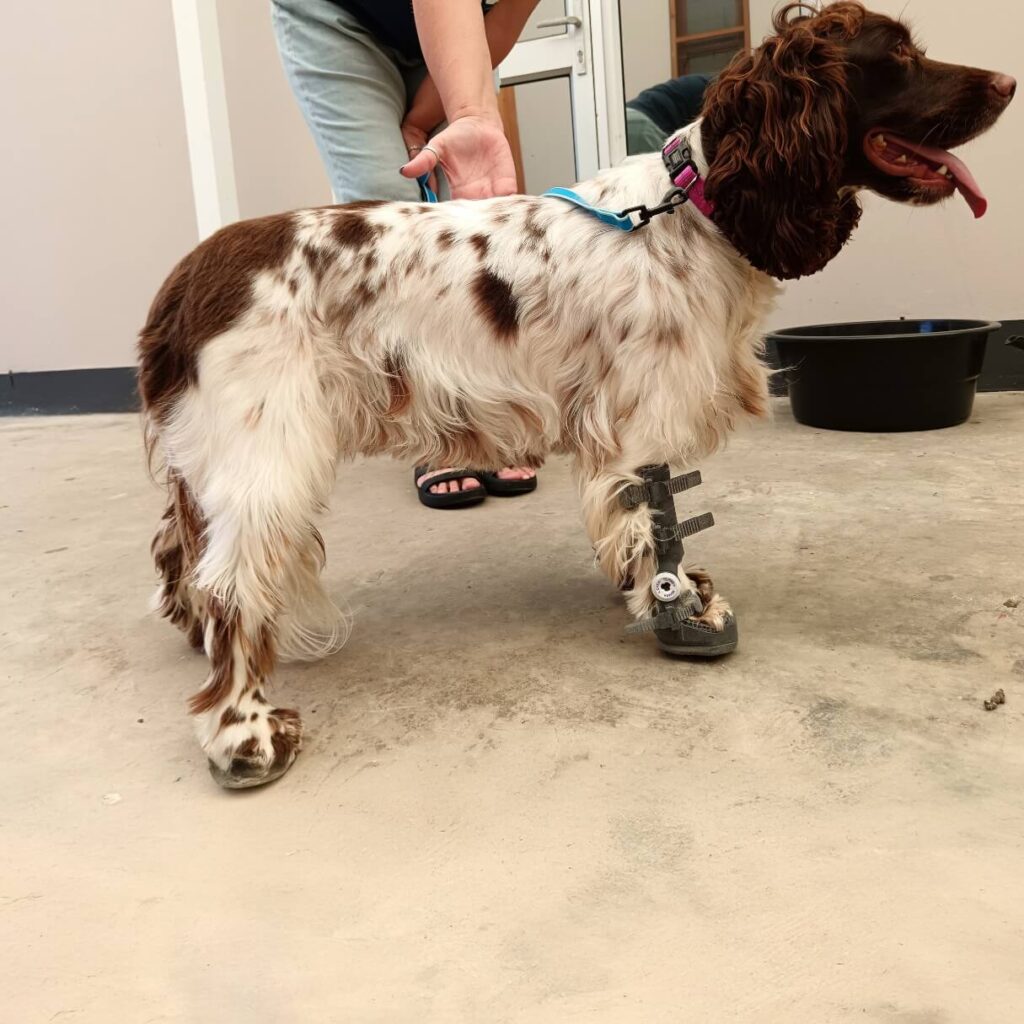


9. Summary
Despite the orthosis providing the intended support and stability, Sophie’s reluctance and distrust of the orthosis made it difficult to fully evaluate its performance. The owner preferred using Sophie’s standard carpal orthosis.
Pros
Cons
Sophia is more and more willing to bear weight with the orthosis on but she is still very reluctant to have the orthosis put on. The orthosis is providing the medial/lateral support that it was designed for and is reducing the amount of rotation through the limb when walking.
Nadia Schrenk, NSVetPhys | Veterinary Physiotherapist in George
10. Detailed Feedback
Scale 1 out 10 (1 – Poor experience; 10 – Outstanding experience)
Tab. 1 Product Goals
| When? | Did it take a long time to put on the orthosis? | How would you rate the ease of putting the orthosis? | Was the fastening mechanism intuitive and easy? |
| First Donning | 4 | 7 | 10 |
| 1st Checkup | 5 | 7 | 10 |
| 2nd Checkup | 6 | 8 | 10 |
| 3rd Checkup | 6 | 8 | 10 |
| 4th Checkup | 6 | 8 | 10 |
| Overall | 6 out of 10 | 8 out of 10 | 10 out of 10 |
Tab. 2 Veterinary Goals
| When? | First Donning | 1st Checkup | 2nd Checkup | 3rd Checkup | 4th Checkup |
| Does the orthosis fulfills its purpose? | YES | YES | YES | YES | YES |
| Did you notice any change in dog’s gait after putting the orthosis on? | YES | YES | YES | YES | YES |
| Does it stabilize the limb according to your goals? | YES | YES | YES | YES | YES |
| Does the orthosis stay stable on the dog’s leg during movement? | YES | YES | YES | YES | YES |
Do You Want to Learn More?
Download our free PDF with medical indications for WIMBA Orthoses Pro and see how they support advanced veterinary care.
Ready to order WIMBA Pro devices? Join us as a WIMBA Provider Pro today! 🚀
